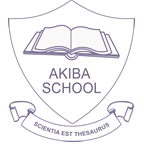Children across Kenya are preparing for the possibility that starting next year school might look very different. The Ministry of Education has plans for significant reforms including restructuring the entire educational system and the implementation of new curricula.
Kenya currently has an 8-4-4- system of education, which is similar in some ways to the US system and includes 8 years of primary education, followed by 4 years of high school, and 4 years of university. The system is largely exam-based and focuses heavily on theory.
Above: Children at Akiba School perform a poem about their hopes for the new educational system.
The proposed reforms aim to restructure the education sector to improve access and student outcomes and to shift to more practical, skills-oriented curricula. The new system will be a 2-6-6-3 system, including include two years of pre-primary education, six years of primary school, six years of high school, and three years of higher education.
The pre-primary and early primary school curricula will focus on psychomotor, environmental, language, and math skills, along with nutrition, hygiene, and religious education. In upper primary school students will begin lessons in social studies, home science, and agriculture along with their core subjects and creative arts, science and technology. A significant change will occur as the new secondary school system will emphasize career guidance and workforce preparation with pre-technical education, life-skills, business skills and health training. The last three years of high school will provide a more specialized education to prepare students in one of three vocational pathways: Creative Arts and Sports; Social Sciences; or Science, Technology, Engineering, and Math. This means that secondary schools may choose to specialize or focus on a single pathway and some schools may become known for STEM while others may emphasize Social Science, Arts, or Athletics.
Another possible change is that the government may introduce free secondary education in the near future. Both President Kenyatta and opposition leader Raila Odinga have promised free secondary education for Kenyans starting as early as January 2018.
Free primary education was introduced in Kenya in 2003, resulting in huge increases in enrollment and many more children able to access basic education. While free primary education covers tuition costs, however, it still requires extra fees as parents are required to buy uniforms, pay additional fees, and in some cases must even buy desks for their children to bring to school. The result has often been overcrowding and arguably a decreased standard of education where schools may have as many as 80 or 100 students per teacher with minimal access to textbooks or other educational resources.
Regardless of the timing or level of the reforms, private schools in Kenya still have a very important role to play. Private and semi-formal schools are able to serve special needs as well as to cater to some of the poorest and most vulnerable communities. Akiba School is preparing for what the new curricula may mean and how to adapt to best serve it’s community. The school remains committed to quality Christian education that nurtures the social, intellectual, physical, and spiritual development of each child.
Learn more about Akiba’s core values and what makes the school unique.


